The electric vehicle market continues to expand, with an increasing number of automakers like BYD and Kia entering the fray. With the release of the BYD Dolphin and the Kia EV3, potential buyers have a compelling choice between two impressive contenders in the electric vehicle segment. In this comparison, we will explore their specifications, innovations, and how these two vehicles stack up against each other.
BYD Dolphin vs Kia EV3 – Performance, range & efficiency compared
Both models have their strengths – but which one suits you more?
Compare performance, efficiency, price and space directly: BYD Dolphin or Kia EV3?
Design and Dimensions
The BYD Dolphin embodies a sporty hatchback design, emphasizing aerodynamics and efficiency. It measures 4290 mm in length, 1770 mm in width, and stands 1570 mm tall, making it compact enough for urban driving while still offering a spacious cabin. With its five-door configuration and a trunk capacity of 345 liters, it provides practical utility for everyday use.
On the other hand, the Kia EV3 adopts the body style of a sleek SUV, which has gained popularity for its elevated driving position and practicality. The EV3's dimensions range from 4300 mm to 4310 mm in length, 1850 mm in width, and a height that varies between 1560 mm and 1570 mm. With a trunk capacity of 460 liters, it offers more storage space compared to the Dolphin, appealing to those who prioritize cargo capacity.
Power and Performance
Under the hood, both the BYD Dolphin and Kia EV3 are equipped with a 204 HP electric motor, delivering a similar power output of 150 kW. However, performance metrics show nuanced differences. The Dolphin accelerates from 0 to 100 km/h in just 7 seconds, whereas the EV3 takes slightly longer, ranging from 7.5 to 7.9 seconds based on the specific variant chosen.
In terms of torque, the Dolphin comes out on top with a robust 310 Nm, compared to the EV3's 283 Nm. This torque advantage may contribute to the Dolphin's sporty feel and driving dynamics, especially in urban environments where quick acceleration is beneficial.
Battery and Range
The BYD Dolphin boasts an impressive electric range of 427 km on a single charge, with a consumption rate of 15.9 kWh/100 km. This efficiency makes it a strong candidate for those looking to maximize their travel distance without frequent recharging.
In contrast, the Kia EV3 offers multiple battery options, with capacities ranging from 58.3 kWh to 81.4 kWh. Depending on the chosen battery, the EV3's electric range varies significantly—from 436 km to an impressive 605 km—for the higher capacity model. Its best consumption figure of 14.9 kWh/100 km highlights the EV3's efficiency, providing a competitive advantage for long-distance travelers.
Innovative Features and Technology
Both vehicles are equipped with advanced technologies, catering to modern EV enthusiasts. The BYD Dolphin focuses on a user-friendly driving experience, integrating an intuitive infotainment system and essential driver-assist features. Its CO2 efficiency class is rated 'A', reflecting its eco-friendly credentials.
The Kia EV3, on the other hand, emphasizes an array of high-tech features designed to enhance comfort and safety. With an advanced suite of driver-assistance systems, the EV3 not only offers convenience but also adds an extra layer of safety. Kia's commitment to innovation ensures that the EV3 remains competitive in the rapidly evolving electric vehicle market.
Conclusion
In the battle of the BYD Dolphin versus the Kia EV3, each vehicle brings unique advantages to the table. The Dolphin stands out for its sporty performance and nimble design, making it an excellent choice for those who favor agility. Meanwhile, the Kia EV3 excels in range and technology, offering more cargo space and options, making it appealing for families and longer trips.
Ultimately, the decision may boil down to personal preference—whether one prioritizes sporty handling and compact dimensions, or a versatile SUV with cutting-edge tech and greater range. Both vehicles are exceptional entries in the electric vehicle market, showcasing the innovative strides being made by BYD and Kia.
Here’s where it gets real: The technical differences in detail
Costs and Efficiency:
When it comes to price and running costs, the biggest differences usually appear. This is often where you see which car fits your budget better in the long run.
BYD Dolphin has a hardly perceptible advantage in terms of price – it starts at 29700 £, while the Kia EV3 costs 30800 £. That’s a price difference of around 1157 £.
In terms of energy consumption, the advantage goes to the Kia EV3: with 14.90 kWh per 100 km, it’s minimal more efficient than the BYD Dolphin with 15.90 kWh. That’s a difference of about 1 kWh.
As for range, the Kia EV3 performs evident better – achieving up to 605 km, about 178 km more than the BYD Dolphin.
Engine and Performance:
Power, torque and acceleration are the classic benchmarks for car enthusiasts – and here, some clear differences start to show.
Both models deliver identical power – 204 HP each.
In acceleration from 0 to 100 km/h, the BYD Dolphin is barely noticeable quicker – completing the sprint in 7 s, while the Kia EV3 takes 7.50 s. That’s about 0.50 s faster.
In terms of top speed, the Kia EV3 performs hardly perceptible better – reaching 170 km/h, while the BYD Dolphin tops out at 160 km/h. The difference is around 10 km/h.
There’s also a difference in torque: BYD Dolphin pulls minimal stronger with 310 Nm compared to 283 Nm. That’s about 27 Nm difference.
Space and Everyday Use:
Cabin size, boot volume and payload all play a role in everyday practicality. Here, comfort and flexibility make the difference.
Both vehicles offer seating for 5 people.
In curb weight, BYD Dolphin is hardly perceptible lighter – 1658 kg compared to 1800 kg. The difference is around 142 kg.
In terms of boot space, the Kia EV3 offers evident more room – 460 L compared to 345 L. That’s a difference of about 115 L.
In maximum load capacity, the BYD Dolphin performs hardly perceptible better – up to 1310 L, which is about 59 L more than the Kia EV3.
When it comes to payload, Kia EV3 somewhat takes the win – 470 kg compared to 410 kg. That’s a difference of about 60 kg.
Who wins the race?
The Kia EV3 proves to be wins solidly and therefore becomes our DriveDuel Champion!
Kia EV3 is the better all-rounder in this comparison.
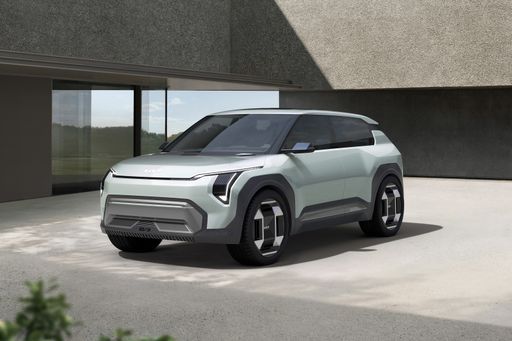 @ Kia Corporation
@ Kia Corporation
Kia EV3
BYD Dolphin
The BYD Dolphin is a cheeky electric hatchback that blends playful styling with surprising practicality, making it a brilliant city companion for buyers who want modern tech without the showroom bravado. It’s comfy, efficient and easy to live with, and while it won’t blind you with supercar drama, it will quietly get the job done with plenty of character.
details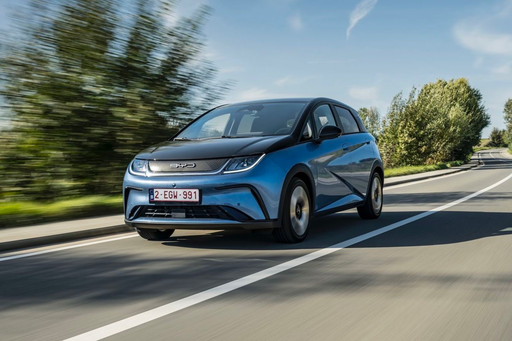 @ BYD Auto / BYD Global Media
@ BYD Auto / BYD Global Media
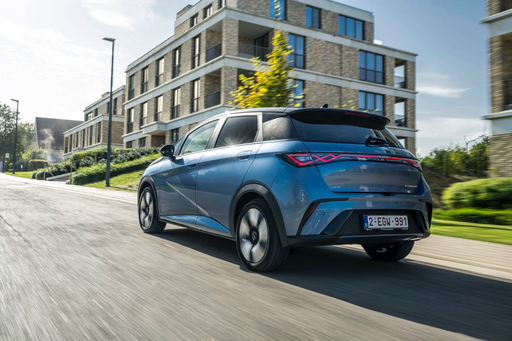 @ BYD Auto / BYD Global Media
@ BYD Auto / BYD Global Media
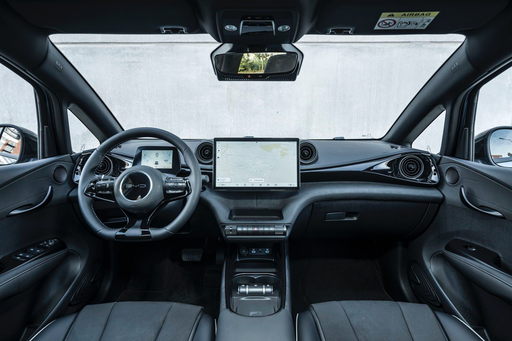 @ BYD Auto / BYD Global Media
@ BYD Auto / BYD Global Media
Kia EV3
The Kia EV3 arrives as a cheeky, practical electric compact that manages to feel both premium and playful, delivering crisp handling and a roomy cabin that's perfect for urban life. With smart tech, friendly styling and sensible pricing, the EV3 is the kind of car that makes switching to electric feel like a no-brainer without asking you to give anything important up.
details @ Kia Corporation
@ Kia Corporation
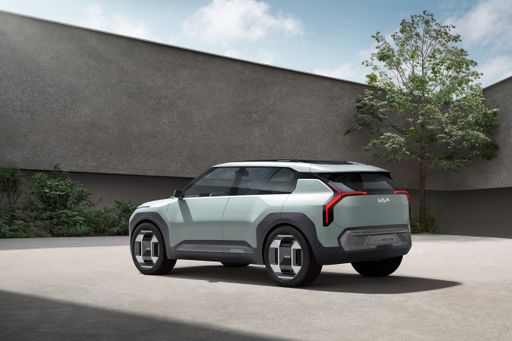 @ Kia Corporation
@ Kia Corporation
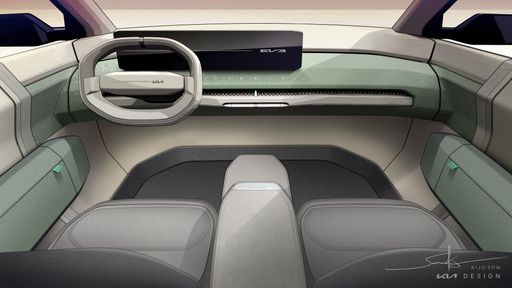 @ Kia Corporation
@ Kia Corporation
 @ BYD Auto / BYD Global Media
@ BYD Auto / BYD Global Media
|
 @ Kia Corporation
@ Kia Corporation
|
|
|
|
Costs and Consumption |
|
|---|---|
|
Price
29700 - 31400 £
|
Price
30800 - 41700 £
|
|
Consumption L/100km
-
|
Consumption L/100km
-
|
|
Consumption kWh/100km
15.90 kWh
|
Consumption kWh/100km
14.9 - 16.2 kWh
|
|
Electric Range
427 km
|
Electric Range
436 - 605 km
|
|
Battery Capacity
-
|
Battery Capacity
58.3 - 81.4 kWh
|
|
co2
0 g/km
|
co2
0 g/km
|
|
Fuel tank capacity
-
|
Fuel tank capacity
-
|
Dimensions and Body |
|
|---|---|
|
Body Type
Hatchback
|
Body Type
SUV
|
|
Seats
5
|
Seats
5
|
|
Doors
5
|
Doors
5
|
|
Curb weight
1658 kg
|
Curb weight
1800 - 1885 kg
|
|
Trunk capacity
345 L
|
Trunk capacity
460 L
|
|
Length
4290 mm
|
Length
4300 - 4310 mm
|
|
Width
1770 mm
|
Width
1850 mm
|
|
Height
1570 mm
|
Height
1560 - 1570 mm
|
|
Max trunk capacity
1310 L
|
Max trunk capacity
1251 L
|
|
Payload
410 kg
|
Payload
470 kg
|
Engine and Performance |
|
|---|---|
|
Engine Type
Electric
|
Engine Type
Electric
|
|
Transmission
Automatic
|
Transmission
Automatic
|
|
Transmission Detail
Reduction Gearbox
|
Transmission Detail
Reduction Gearbox
|
|
Drive Type
Front-Wheel Drive
|
Drive Type
Front-Wheel Drive
|
|
Power HP
204 HP
|
Power HP
204 HP
|
|
Acceleration 0-100km/h
7 s
|
Acceleration 0-100km/h
7.5 - 7.9 s
|
|
Max Speed
160 km/h
|
Max Speed
170 km/h
|
|
Torque
310 Nm
|
Torque
283 Nm
|
|
Number of Cylinders
-
|
Number of Cylinders
-
|
|
Power kW
150 kW
|
Power kW
150 kW
|
|
Engine capacity
-
|
Engine capacity
-
|
General |
|
|---|---|
|
Model Year
2023
|
Model Year
2024
|
|
CO2 Efficiency Class
A
|
CO2 Efficiency Class
A
|
|
Brand
BYD
|
Brand
Kia
|
What drivetrain options does the BYD Dolphin have?
The BYD Dolphin is offered with Front-Wheel Drive.
The prices and data displayed are estimates based on German list prices and may vary by country. This information is not legally binding.
